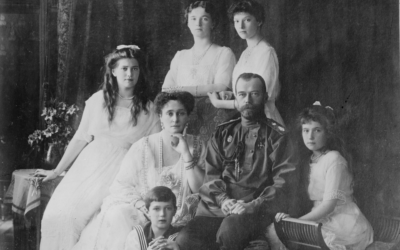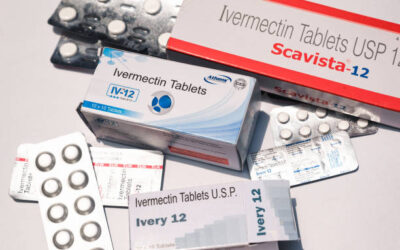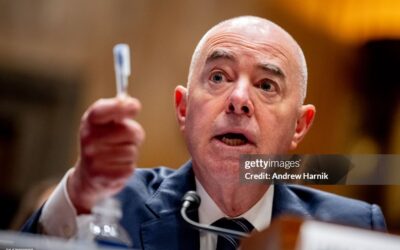Michael Senger’s Snake Oil: A Review
 |
|
Michael P. Senger, Snake Oil: How Xi Jinping Shut Down the World (2021). 220pp. ISBN: 978-1957083780. $10.99.
I will never tire of typing that the whole question, of how lockdowns became the default response to Corona, is very hard. Some points are nevertheless clear: There was, without a doubt and in the earliest stages, a kind of lockdown cabal, a small group of people in different countries who worked to bring some simulacrum of the Hubei response first to Italy and then to most of the globe. An insidious, coordinated information campaign accompanied their efforts, and this should warn us against easy assumptions that they had good intentions.
On social media, a swarm of manipulative pro-lockdown accounts promoted containment and attacked any prominent politician who tried to steer a moderate course. Michael Senger was among the first to point out that this campaign was operated, in part, out of China. His crucial September 2020 article on the Chinese promotion of lockdowns on social media for Tablet Magazine won him wide renown. He had over 100,000 followers on Twitter before the platform banned him; he now writes The New Normal on Substack, and you should all subscribe to him.
In his Tablet article, throughout his time on Twitter, and in his new blogging incarnation, Senger has developed a lean, straightforward thesis that aims to cut the Gordian knot of what has befallen us. He lays responsibility for lockdowns at the feet of the Chinese Communist Party, and in particular Xi Jinping. In the strictest sense, he is surely right here: None of our countries would have locked down, if China hadn’t done so first and convinced the World Health Organisation that mass containment was effective.
Senger’s thesis, however, is more precise than that. He sees lockdowns as a manifestation of fang kong, Mandarin for “prevent” or “control” – a broader, ideologically loaded concept that extends to things like the isolation or internment of political dissidents and mass surveillance. “Xi’s lockdown of Wuhan,” he writes (p. 44)
had been inspired by the CCP’s pet hybrid of public health and security policy: Fangkong, the same policy that inspired the reeducation and “quarantine” of over one million Uyghur Muslims and other minorities “infected with extremism” throughout Xinjiang and Tibet.
Xi Jinping, in Senger’s telling, then leveraged extensive Chinese relationships with political, media and academic actors throughout the West, to establish lockdowns as a “global policy” in “one of the most audacious psychological operations in all of recorded history” (p. 42).
Senger sets the virus itself to one side; it is for him a minor matter, compared to the great edifice of the lockdown information war. He proposes, along with some other dissident theorists, that SARS-2 might have been circulating as early as 2018, in which case Wuhan is unlikely to the be city of origin: “[T]he CCP could have picked literally any city to shut down for purposes of its lockdown fraud. Xi Jinping [chose] Wuhan because there was a lab there” (p. 99). The lab leak thus becomes, in the Sengerian thesis, above all a propaganda distraction:
The Wuhan lab had indeed played a key role in lockdowns. But not necessarily as a source of the coronavirus, which proved to be fairly ordinary. Rather, the CCP had used the Wuhan lab as a decoy to misdirect their opposition. … The Wuhan lab had been engaged in “gain of function” research on coronaviruses in bats … Worse yet, the Wuhan lab had lax security for one engaged in this kind of research. During gain-of-function research, so the story went, one of these coronaviruses had leaked out, causing mass death in Wuhan about which brave whistleblowers like Li Wenliang had to warn the world. But the CCP had covered it up, allowing the supervirus to spread. World leaders had to implement lockdowns and other cutting-edge measures on the advice of their best scientists and health officials. This was the narrative that preoccupied the intelligence community throughout 2020 and 2021. They knew about the virus’ unique furin cleavage site. All they had to do was prove SARS-CoV-2 came from that lab, and China could be held responsible. … It was, indeed, the perfect setup. Exactly as Xi Jinping intended.
Li Wenliang, the ophthalmologist admonished in early January for spreading rumours on WeChat of a novel SARS-related outbreak in Wuhan, is also in Senger’s view an invention of the lockdown propagandists. Intriguingly, he notes that “the first time the world ever heard the name ‘Li Wenliang’ was on January 27, 2020” (p. 40), when the Hubei lockdown was just four days old and the internet was brimming with mysterious, since-debunked videos of sudden virus death in Wuhan.
Senger also sees early PCR test development as essentially fraudulent (pp. 67–72), and the collapse in Wuhan infections after February 2020 in Hubei as a lie. “China had simply forged its data and quietly adopted a herd immunity strategy” (p. 77).
As they did so, Xi fed the world bogus medical advice calibrated to increase SARS-2 mortality (p. 105):
The CCP’s initial “medical guidance” from Wuhan was designed to inflict death in three ways: 1. Excessive use of mechanical ventilators, killing patients outright; 2. Moving still-sick patients to nursing homes, ostensibly to clear up hospital space; and 3. The deprivation of lockdowns themselves, increasing deaths from other causes. That initial spike in deaths from China’s “medical guidance” would be used as proof of COVID-19’s danger, sowing the fear that would justify further lockdowns.
The result was that a lot of western media personalities and politicians began insisting on the necessity of lockdowns to eradicate SARS-2 and praising the Chinese response. Many of these characters had either Chinese ties, a history of strange public Sinophilia, or at the very least highly curious timing in their advocacy and public statements. When they finally got their lockdowns, these failed to work, which was unsurprising given the „evidently fraudulent scientific origins” of such interventions (p. 86).
Senger concludes (p. 140) that
Lockdown was never about a virus. It was about sending a message: That stripped of all disguise, the illusion of virtue, competence, and commitment to human rights among the western political class was nothing but conformity with easily-subvertible norms and institutions passed down by prior generations. Since the original egalitarian propaganda of communism no longer fooled most people, the system had to be rebooted with a new lie that would justify the indefinite suspension of the rule of law. Xi had found it in the form of a “virus.”
Ordinarily, in reviews, one tries to give an idea of the contents without giving the whole argument away, but I feel comfortable making an exception in this case, because Senger has outlined all of these ideas himself on Twitter, and because even a close summary is no substitute for this book. You really should read Snake Oil for yourself: It’s a lean, enjoyable and highly stimulating monograph, and its 590 end-notes (accounting for over 25% of whole book) are full of valuable references – many of them to long-forgotten articles from the earliest days of the pandemic.
Senger’s radical scepticism has tactical utility. It presses the Chinese origins of mass containment to the most extreme conclusion possible, leaving lockdown advocates in an embarrassing position, with their awkward histories of publicly extolling Chinese success against the virus. It also has the virtue of insisting that SARS-2 is just not that special. As I have argued many times, this is an important truth, and the only thing that has a hope of disarming the lockdowners and the vaccinators in the longer term.
Some will nevertheless hesitate to accept the entirety of Senger’s view that “Everything is Fake” (the title of his sixth chapter), and here I want to explore what a slightly less absolutist version of his thesis might look like.
I’ll start by ceding a little ground to SARS-2: It is not a magical virus, and it is not worth the expenses we have incurred in our war upon it, but we can solve of a few problems if we posit that its genetic similarity to SARS-1 was a big reason for early hysteria, and that indeed it is deadly for some people. Once we have gone that far, Chinese motivation becomes easier to account for. Some would say that the Chinese, at the start, were responding to what they feared was another SARS-level outbreak, perhaps one that really had leaked from the Wuhan Institute of Virology sometime in mid-2019. (I don’t think SARS-2 is likely to be much older than that; nobody can find earlier evidence.)
For a long time, I tried not to talk about the lab leak hypothesis, because I thought it fuelled pro-lockdown rhetoric, and this is surely one of the reasons Senger tries to sideline it here. I would nevertheless suggest that it’s a key piece of the puzzle, especially when it comes to explaining elite overreaction to Corona both within China and beyond. Nor is it an accident that the establishment press first entertained the thesis as the vaccination campaign kicked off and the vaccinators were struggling to submerge everyone in fresh terror of Corona. I don’t think that means SARS-2 is a bioweapon or that its genome carries very much evidence of “engineering.” It’s just a SARS-related bat coronavirus that has been optimised to infect humans.
We might also make some concessions to Chinese bureaucratic corruption and scientific incompetence, both widely attested. Cast in this light, the whole matter of Li Wenliang’s censure and his brief media cameo at the end of January 2020 begins to look like a Chinese repudiation of a prior policy to cover up the Wuhan infections. We don’t have to banish the doctor from existence, necessarily, although his death is highly suspicious.
As for skulduggery surrounding Christian Drosten and his early role in developing a SARS-2 PCR test development: The tests do detect the presence of the virus, after all, so perhaps it is not precise enough to dismiss this work as fraudulent. Instead, what we seem to be seeing here, is an effort to throw together a means of diagnosing SARS-2 infection that would have credibility in the West and with the World Health Organisation. This was perhaps done, by laundering prior Chinese research through Drosten, a western virologist known for his role in developing PCR tests for SARS-1 .
Many theses of Chinese motivations in promoting lockdowns to the West are possible. We may have to admit that we don’t know, and that our ignorance has two facets: 1) We don’t know what the Chinese were trying to do, and 2) we don’t always know what the small lockdown-happy cabal of western scientists and bureaucrats who imposed their policies upon us were trying to do.
In the absence of hard evidence, incompetence and a desire to save face might be the simplest path: By late February, after western media outlets had spent weeks chiding China for their harsh authoritarian measures, their officials had figured out that SARS-2 wasn’t that bad. The risk at that point was that no other countries would do very much about SARS-2, and they’d be none the worse for it. So, to save face, China needed the WHO to endorse their lockdown at the very least; ideally, some Western nations would even imitate their approach. The Chinese pulled what strings they had, even providing secret advice to western public health officials and social media cover for their politicians.
Senger is surely right about the extensive influence China wields across western political, media and academic institutions – much of it hidden or unexplored. For many key lockdowners, though, precise China ties remain obscure, and I think we will have to consider that at least some of them had other motivations. In some cases, as with Tomas Pueyo, we seem to be looking at incidental figures whose feverish internet theorising was promoted by rigged social media algorithms at the right moment. Epidemiologists and modellers like Neil Ferguson, on the other hand, have personal and professional motivations. Virus panic is how scientists like them get funding and become important. Of course, Senger would counter that China knew this and exploited these professional concerns, and he’d be right.
It’s a testament to Senger’s thoroughness, that he finds space (pp. 54–56) for the early history of lockdowns in Germany, and the suspicious roles played by Otto Kölbl and Maximilian Mayer in helping to draft a pseudoscientific “strategy paper” full of fake modelling projections, designed to convince members of parliament and the press that lockdowns were the only way.
I’ll retell that story here, because it helps me think about lockdowns and the limits of our knowledge:
Directly after Neil Ferguson released his insane models predicting massive SARS-2 mortality in England, on 16 March, Christian Drosten and Lothar Wieler met with then-interior minister Horst Seehofer, and urged him to find a way to extend the German closures. Seehofer then convened a team of alleged experts to model the trajectory of the pandemic in Germany and the likely effects of necessary countermeasures. The team included Kölbl, a Germanist; and Mayer, a junior professor of international relations. Both were China admirers with no qualifications in virology or epidemiology, and they proceeded to inform the team from a position of authority, at a key moment even providing secret, ready-translated material straight from China. They were plainly cut-outs for hidden and anonymous Chinese advisers.
But here are the important things we don’t and may not ever know:
-The proximate cause of this little fraudulent strategy session was Ferguson’s model, and the proximate cause of Ferguson’s model was the Italian lockdown announced on 8–10 March. The proximate cause of that lockdown, in turn, was regional containment and mass testing in northern Italy, organised by Walter Ricciardi from 24 February – exactly the day that the WHO held a press conference endorsing the Chinese lockdown in Hubei. Did Ricciardi stumble into lockdowns by accident, after mass testing uncovered community spread? Or was the intent to lock down already on 24 February, and the purpose of testing only to find cases to justify such an extreme measure? If so, why?
-Christian Drosten was only in a position to lean on Seehofer because of the prominence his state media Corona podcast had won him. He started in that role at the end of February. Who put him there, was it related to his PCR test work from January, and which parties was he representing when he pushed for longer lockdowns on 16 March?
-How did German bureaucrats establish contact with Mayer and Kölbl? Whose idea was this bizarre strategy of laundering Chinese advice through transparent low-level academics? Was similar advice provided via the same process to other countries, and if so, who mediated those relationships?
The Chinese snake-oil peddlers are an important, early thread in this tapestry. Even if they are not the whole cloth, they are damning enough: Western epidemiologists and public health bureaucrats ditched their own longstanding mitigationist plans in favour of a mass containment fantasy that they copied wholesale from China. They then sold these unsupported improvisational measures to westerners with Chinese help, via a deceptive and malicious propaganda campaign. This is a central aspect of the Corona pandemic, and Senger has done more than perhaps any other person to bring it to the notice of the world.
Subscribe to eugyppius: a plague chronicle
We are witnessing an unprecedented, comprehensive failure of policy, medicine and science. The world will never be the same.










0 Comments